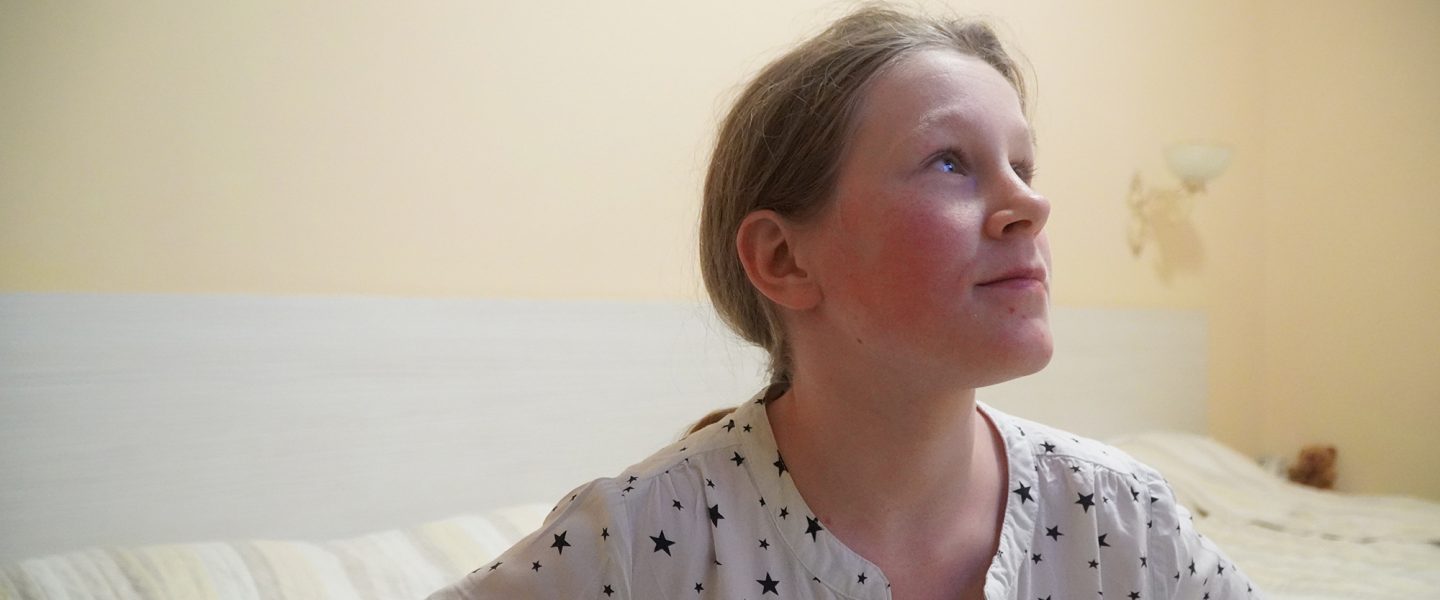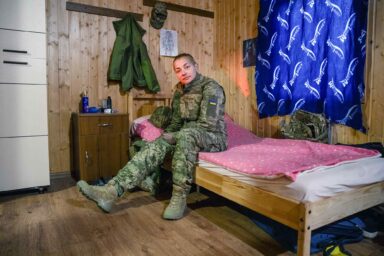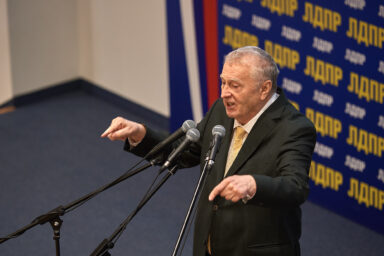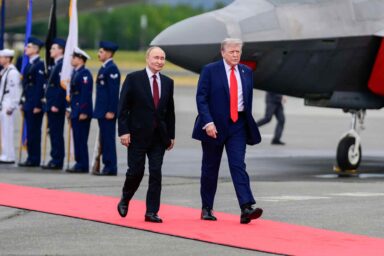Thousands of Ukrainian children have been taken to Russia and occupied territories during the invasion. Some have come home, but the journey is difficult — and for others, it might soon be too late.
|
Listen To This Story
|
KYIV, Ukraine — Tetiana Vlaiko feels like an idiot. She is ashamed to speak to WhoWhatWhy about how the Russians took her 11-year-old daughter Lilia to Russian-occupied Crimea. She says that last October, the teachers at her daughter’s school in Kherson convinced her to send Lilia to what they called a “summer camp.”
It turned out to be a Russian re-education facility.
“All the mothers at the school signed up. Probably, I could have said no, but the teachers kept saying that all kids are going, it is for free, and she will come back in two weeks,” said 36-year-old Vlaiko.
Vlaiko said that she initially thought it would be good for her daughter to get away from Kherson for a short period. At the time, the city was under Russian control, and the Ukrainians were fighting to get the city back. Life there was dangerous. Vlaiko says there were rumors of Russian brutality and rape of people on the streets and a constant risk of shelling.
Crimea was (and still is) also under Russian control, but it was safer than Kherson.
Lilia was supposed to be home on October 21. She didn’t show up, and neither did any of her classmates.
“I called the teachers when I realized she wasn’t returning. I tried to find out what was happening, but they didn’t answer,” said Vlaiko, who explained that some teachers picked up the phone at the beginning and said they didn’t know when — or if — the kids would return.
She told WhoWhatWhy that the school closed for good after the kids were taken.
At one point in late October, Vlaiko and other parents found the school’s director, who told them the kids weren’t returning. She recalls him saying there was nothing he could do about it and that he was planning to leave Kherson and go to another Russian-controlled area. Vlaiko told WhoWhatWhy that he seemed very pro-Russian.
“It became clear that they never intended to send my daughter back. I got crazy hysterical and was full of guilt,” said Vlaiko.“I should never have told her she could go.”
She didn’t see her daughter again for almost four months.

Many Children Have Been Taken
More than 6,000 Ukrainian children have been sent to re-education facilities inside Russia or the Russian-held areas of Ukraine, according to a recent US State Department-funded report by Yale University. Other estimates range from several thousands to hundreds of thousands.
The Ukrainian government website Children of War reports that 16,226 children have been deported to Russia and that only 308 have been rescued as of March 10.
The Yale study concludes that there are at least 43 facilities where the Russians hold the Ukrainian kids. Most are near the Ukrainian border and in Crimea, but there are also camps in Siberia.
“Multiple camps endorsed by the Russian Federation are advertised as ‘integration programs,’ with the apparent goal of integrating children from Ukraine into the Russian government’s vision of national culture, history, and society,” says the report.
The Kremlin has not commented on this study.
Last June, Russian Foreign Ministry spokeswoman Maria Zakharova said Russia is evacuating Ukrainians in order to save them.
“Over 2 million people, almost 325,000 of them minors, have been evacuated from dangerous regions of Ukraine and Donbas republics to the Russian Federation,” Zakharova said, according to the Russian News Agency Tass. “All these people travelled to our country voluntarily, saving their lives and the lives of their children.”
The Long Road to Russia
At the end of October, when Russian defenses in the Kherson region started to break, Vlaiko took the ferry to Crimea — a short trip — to find her daughter. There were many Russian soldiers there, and Vlaiko was afraid of what might happen. What’s more, she heard people saying that soon there would no longer be any boats back to Kherson. She decided to return while there was still time.
Vlaiko’s 19-year-old son, who has Down syndrome and cannot care for himself, was still in Kherson.
After the Ukrainians liberated Kherson, Vlaiko was free to travel to Kyiv, a trip that would have been too dangerous before as she would have had to cross the front lines. Once she was there, in November, Vlaiko reached out to Save Ukraine, a charitable fund helping Ukrainians with evacuations, humanitarian aid, and housing for refugees.
The organization found out where Lilia was and secured travel documents for Vlaiko. Save Ukraine took Vlaiko and the parents of 15 other missing children from Ukraine to Russia, traveling a circuitous path of 2,360 miles via Poland and Belarus. This road trip took more than ten days.
“It was a crazy long road full of checkpoints,” said Vlaiko.
Finally, in early February, they reached the Russian facility, Pansionat Dol “Luchistyy,” in Zaozerne, in the western part of Crimea. There, Vlaiko was reunited with her daughter.
It had been almost four months since they had seen each other.

Getting home was harder. It was easy to cross from Crimea and into Russia, but the Ukrainians encountered problems leaving Russia at the Belarussian border. Vlaiko said that Russian border guards blocked them at three crossings, saying they couldn’t leave the country.
After three failed attempts to cross into Belarus, Save Ukraine decided to try the border into Latvia, where they were finally allowed to cross.
“It was such a relief. Finally, it felt like everything was good again,” Vlaiko said, adding that it also took them several days to make it back to Ukraine.
They traveled 2,800 miles to get home.
It May Soon Be Impossible
Mykola Kuleba is CEO of Save Ukraine. He told WhoWhatWhy that his organization has helped rescue 44 children from Russia so far. It is a complex operation, expensive, and difficult to get hold of all the necessary paperwork. Families seek help from Save Ukraine when they cannot manage it on their own. Kuleba said that when children are taken, time is of the essence.
“We must do it immediately because otherwise, they might give the kids the status of a Russian orphan and send them to a Russian orphanage. A Russian family can quickly adopt them, and then it is too late,” said Kuleba.

Once children are adopted, their names can be changed, which makes them impossible to find. Furthermore, if the kids receive Russian passports, they can’t leave the country. “We don’t know how many thousands are taken and how many have been adopted already,” Kuleba said.
Kuleba thinks that getting Ukrainian children out of Russia might soon be impossible. Save Ukraine’s experience getting Lilia home — being denied permission to leave Russia through Belarus at three checkpoints — is a cautionary tale.
“The roads out of Russia could be closed at any time,” said Kuleba.

While Save Ukraine has been successful at bringing 44 Ukrainian children back home to date, there are four other children the organization was unable to rescue. In those cases, Save Ukraine said that the re-education camp wouldn’t allow the children to go.
Save Ukraine has also observed several examples of kids being moved around without their parents’ knowledge. If the parents want their kids back, they must go to Russia.
Kuleba said that the purpose of these camps is to destroy the childrens’ Ukrainian identity.
“Some kids told us that they are forced to sing Russian songs and forget everything about Ukraine when they are in these camps,” said Kuleba.

What Kuleba says is consistent with what happened to Lilia, according to her mother. Lilia and the other students were only allowed to speak Russian at the re-education facility, and they were taught Russian history. They were scared of even trying to speak Ukrainian because they would be punished, said Vlaiko.
Lilia did not want to speak to WhoWhatWhy.
While she was in the re-education facility in Crimea, Lilia kept to herself, but she was able to correspond with her mother via the Telegram app several times per day. At one point, Lilia lost her phone, but she was able to borrow another kid’s phone so she could keep talking to her mother. Vlaiko showed WhoWhatWhy some phone messages she sent to Lilia — short messages in which she promised Lilia that she would come and get her.
Vlaiko cannot think about what would have happened if she had been unable to bring her daughter home.
“I am just so happy to be together with Lilia again,” said Vlaiko, “She has been so strong. She has been like a stone when everybody else has been crying.”

Currently, the Vlaiko family is living in a hotel in Kyiv, figuring out what to do. There is no reason to return to the apartment in Kherson, where they had been staying with Vlaiko’s sister. Kherson is often shelled by the Russian army from its positions nearby.
Vlaiko and her children are also battling the mental images of the intense fighting they have witnessed from the beginning of the invasion.
“We don’t know what will happen now. We don’t have our place to live anymore, and I don’t have a job, so it is difficult,” said Vlaiko.
“We have to start again from scratch — but at least together.”




